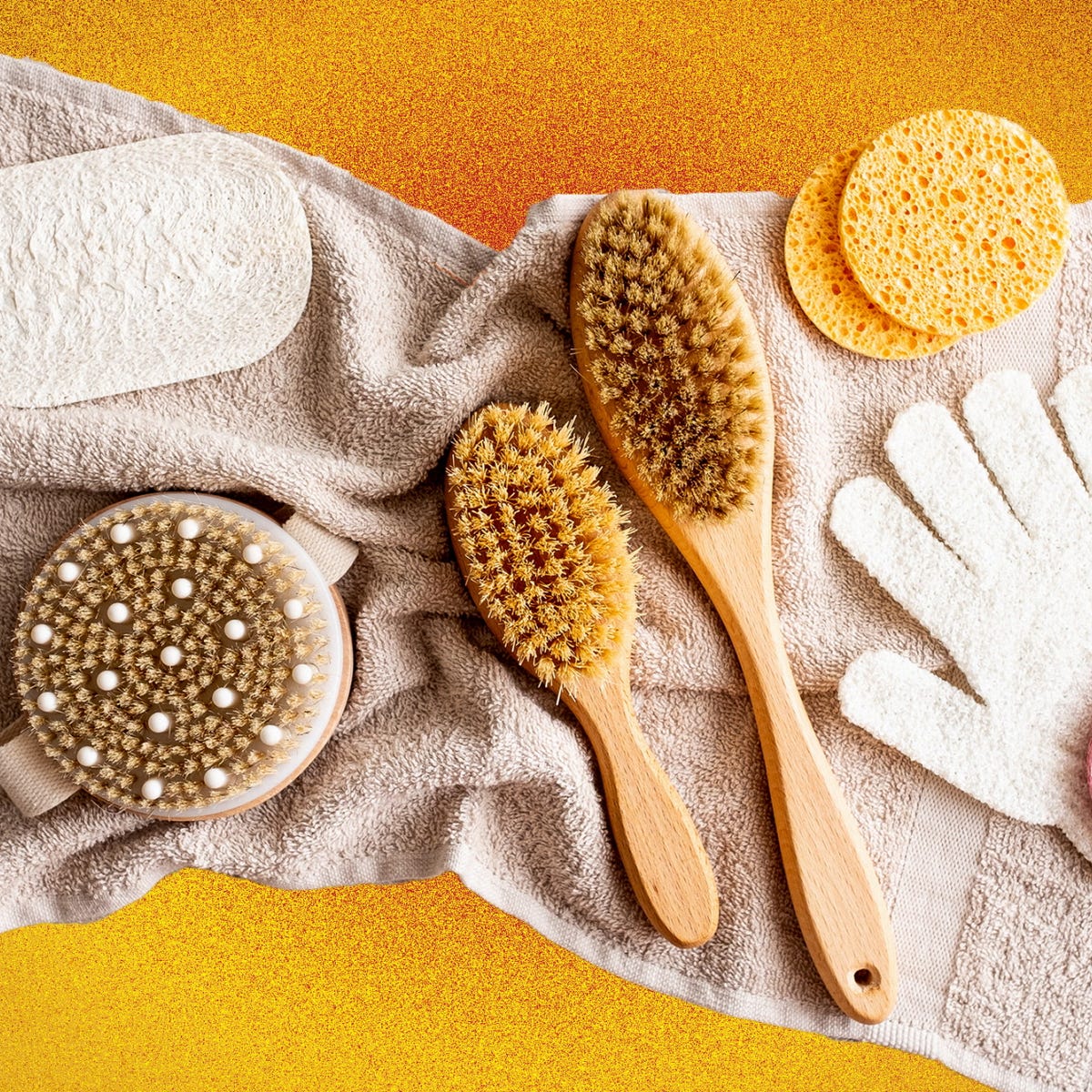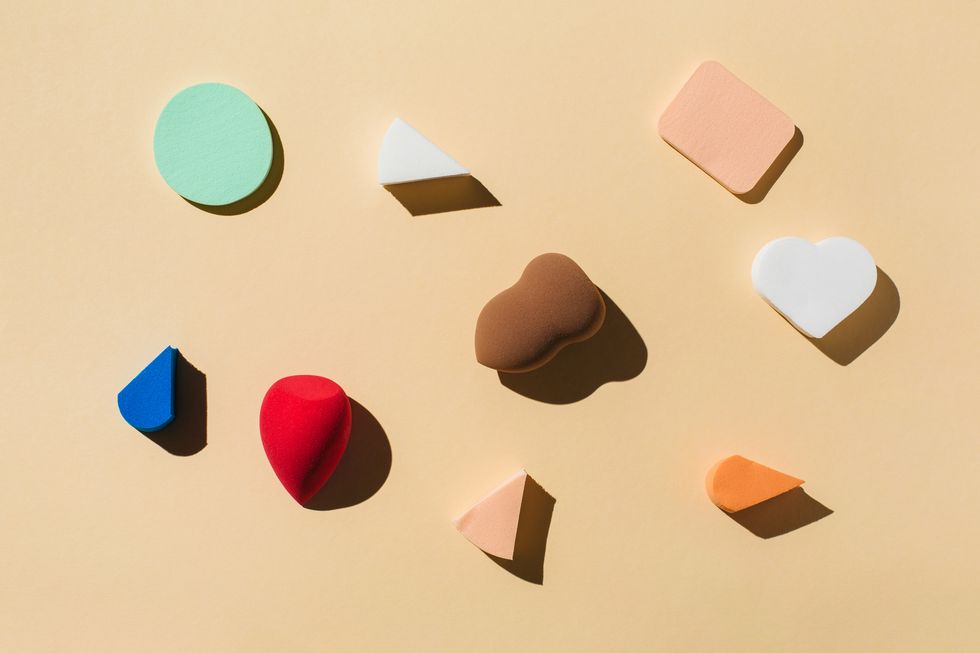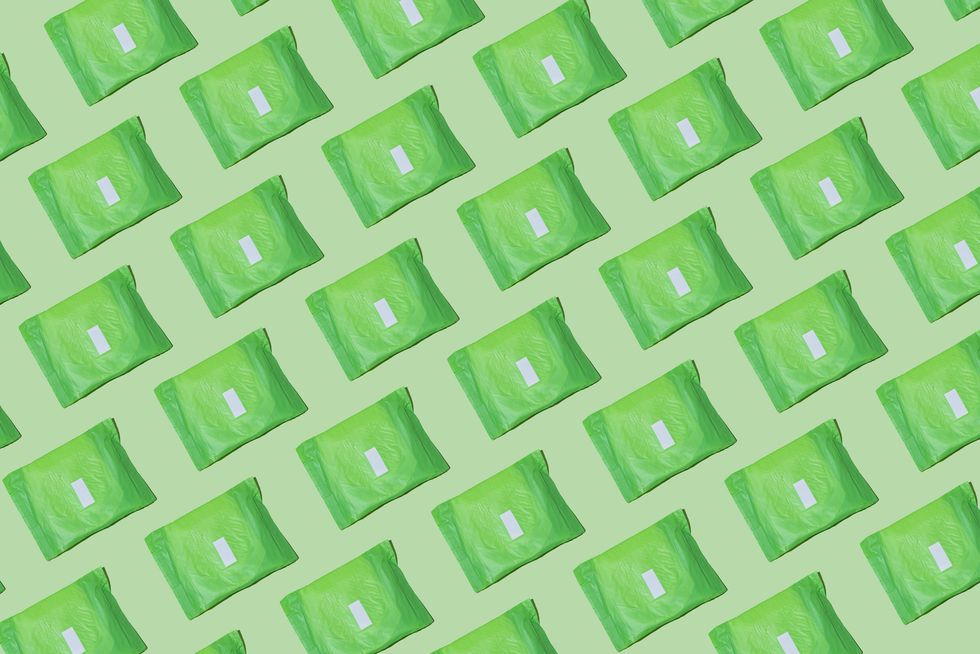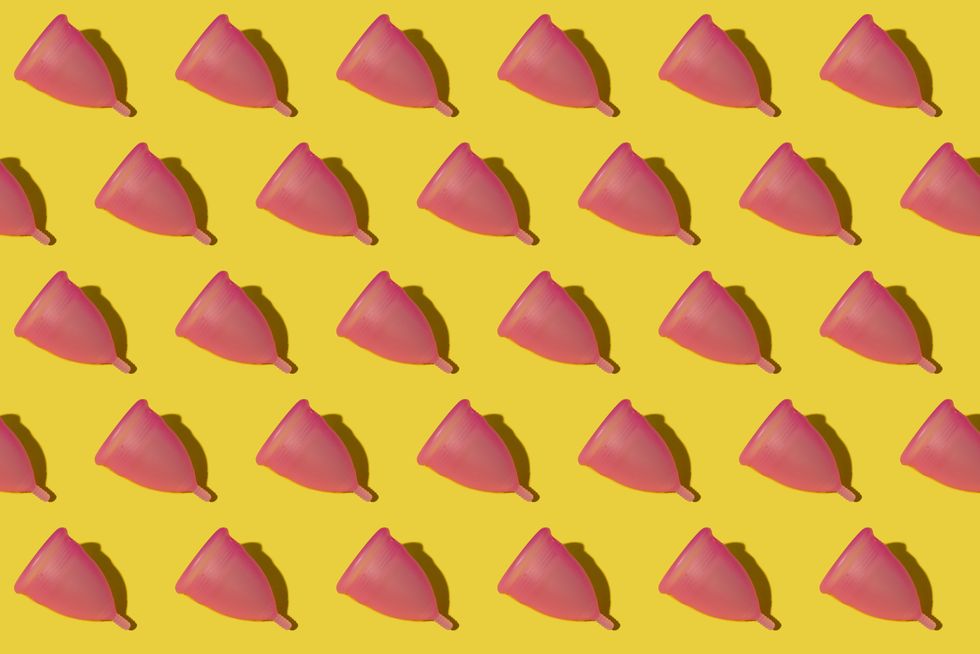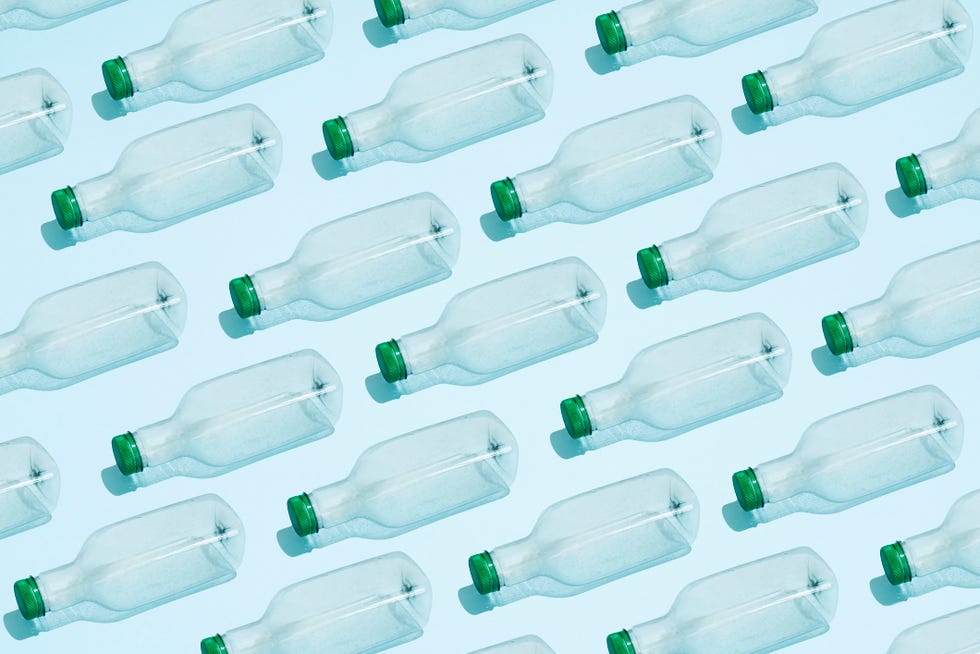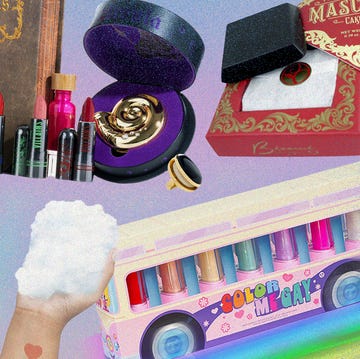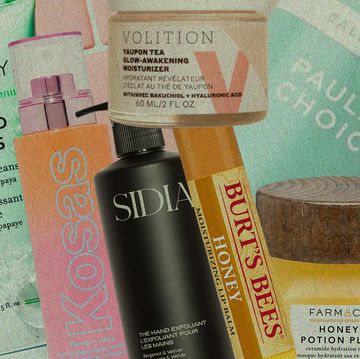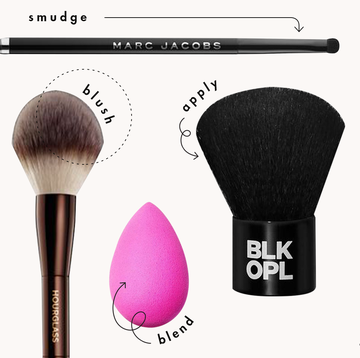Swapping out single-use health and beauty tools with reusable alternatives is an excellent way to do the environment a solid while also relieving your climate anxiety (and without sacrificing the sacred bond you have with your beauty routine). As you become one with your reusables, the initial learning curve of when and how to maintain them properly can be overwhelming. Ditto when and how to dispose of them.
“Many people don’t read, let alone keep track of, the recommended expiration dates of each reusable product,” says Dawn Gilliam, founder of Date My Make-Up, a health and beauty brand that specializes in expiration tracking. “Then, months or years go by, and you have no idea how to recognize whether one of your tools needs to be replaced.”
When tools aren’t properly cared for or disposed of frequently enough, the lingering bacteria and germs can cause skin irritation, infections, and rashes — none of which Mother Nature wants for you. To get your health and beauty sustainability efforts back on the rails, here’s a rundown of how to maintain your reusables, when to replace them, and the best ways to dispose of them.
Reusable Cotton Swabs
Replace every 2 years.
Reusable swabs feature durable silicone tips that can be used roughly 1,000 times. If you were to use one an average of 35 times per month, one swab could last you two years or more.
“Bacteria can form on the swab and potentially end up in the eye or ear if not properly cleaned after every use,” Gilliam says. Use warm water and soap to clean after every use, and dry thoroughly before putting it back in its case.
Disposing of reusable cotton swabs depends on the rod. Silicone tips can be tossed in the garbage, and the rod can be composted if made of bamboo. If it’s plastic, check to see if the brand is part of a recycling program, such as Pact Collective, or do an Earth911 search to hunt down local options.
Reusable Facial Rounds
Replace every 3 to 5 years.
Facial rounds are typically made from cotton, bamboo, microfiber, or a combination of all three. Depending on the brand, one round can last up to 1,000 washes. Rounds should be cleaned after each use.
“Hand-washing — using a gentle cleanser in cold water — will prolong the life of the rounds longer than machine-washing,” Gilliam says. “To avoid potential bacterial or fungal growth, let your rounds dry completely before storing them.”
If your rounds start to fall apart or look dingy after deep cleaning them, it might be time to replace them. Check the label first, but most rounds can be cut up and thrown in a compost bin.
Makeup Sponges
Replace every 1 to 3 months.
Eco-friendlier makeup sponges — plant-based, biodegradable, silicone — can last up to three months. “It’s best to wash them after every use with a gentle cleanser and make sure they’re thoroughly dry before storing them,” says Gilliam. (To deep clean your silicone applicator, soak it for one to two minutes in boiling water.)
If there are nicks and tears in your sponge or it’s looking drab, it’s time to swap it out for a new one. One hundred percent plant-based or biodegradable varieties can be composted or recycled — brands that sell partially plant-based or silicone ones might have a recycling program you can send them back to.
Blotting Pads
Replace every 1 to 3 months.
Depending on how oily your skin is and how often you use them, reusable blotting sponges can last an average of two months. As with makeup sponges, blotting pads should be washed after every use. “Hand-wash with a gentle cleanser, and thoroughly dry before storing,” Gilliam says.
If the sponge is losing its shape or has nicks and tears, swap it out for a new one. Because these pads are made out of medical-grade foam and require a specific recycling process, the brands that create them likely have a recycling program you can use to send back your used blotting pads.
Reusable Tissues
Replace every 2 to 3 years.
A single reusable tissue, made of certified organic cotton, can be machine-washed more than 500 times, perhaps longer if washed in a mesh laundry bag. “Remember to unfold them before washing,” Gilliam advises. If your reusable tissues start to come apart or become super-discolored, then it’s time to recycle them with textiles.
Facial Scrubbers
Replace every 4 to 6 months.
Manual facial scrubbers are typically made of silicone, thanks to their durability and how gentle they are on all skin types. Wash with facial or body wash after each use, and let it air dry. They can last anywhere from four to six months. Replace if it becomes misshapen or starts to fall apart.
Silicone is recyclable but can’t be tossed in most residential recycling bins. Check to see if your brand of facial scrubber has a recycling program in place, or find a specialized recycling company, such as TerraCycle and Eco U.S.A.
Reusable Sheet and Eye Masks
Replace every 1 to 10 years.
Depending on the care and quality of the silicone, reusable sheet masks can last 10 years, possibly longer. “No matter the quality, wash with a gentle cleanser in warm water after every use,” says Gilliam. “Once it’s completely dry, put it back in its storage pouch.”
Meanwhile, reusable eye masks can last up to one year with everyday use — even longer if you use them only a few times a week. Gilliam recommends washing them with a gentle cleanser and warm water after each use and letting them air dry — sticky side up — before popping them back into their storage container.
If your reusable masks are starting to lose their form or are beginning to tear, it’s probably time to recycle and replace them.
Konjac Sponges
Replace every 1 to 3 months.
Because these sponges are made from the konjac root, a root vegetable that grows in Asia, they can be tossed in your compost bin once it’s time to replace them.
“Sponges can be a breeding ground for bacteria when not properly cleaned or regularly replaced,” says Gilliam, who recommends replacing konjac sponges every one to three months, depending on how often you use them and how well you maintain them.
To make them last, clean them with soap and rinse away all residue after each use, then dry them thoroughly in a place with good ventilation.
Pads and Period Underwear
Replace every 6 months to 2 years.
With proper care, reusable pads and period underwear can last up to two years. It’s best to follow the specific manufacturer’s directions, but most recommend rinsing these items after you’ve taken them off — in cold water until it runs clear — and letting them completely dry before tossing them in your laundry hamper.
Generally, period underwear and reusable pads should be washed in cold water on the delicate setting with a gentle detergent, preferably in a mesh garment bag to prevent snags and maintain the integrity of how they’re constructed. Never use bleach or fabric softener, which can mess with their absorbency, and hang them to dry.
It’s time to replace period underwear or pads if the elastic and threads start to stretch or break or they don’t seem to be as absorbent anymore. Check with the brand to see if they have a recycling program for your old underwear or pads.
“Another option would be to find a clothing recycling program, like Helpsy, that sells scraps to industries for rags or filling or partners with thrift stores,” says Heather White, an environmental science expert and founder of the nonprofit group One Green Thing.
Menstrual Cups
Replace every 2 to 5 years.
Menstrual cups are typically made from silicone and can last upward of five years. Rinse with hot water after every use, and when your cycle is over, clean your cup in boiling hot water for five to 10 minutes. “This helps to get rid of any lingering bacteria,” Gilliam says. “Don’t use harsh cleaning agents or fragrance-based soaps, [which] can compromise the integrity of the product.”
If you notice a foul odor, white powdery residue, or tears or cracks in the rim or stem of the cup, it’s likely time for your menstrual cup to be replaced. Some companies have a recycling program in place. If your go-to brand doesn’t, cut up the cup, and throw it away.
Exfoliating Gloves
Replace every 1 to 2 months.
It’s generally best to replace exfoliating gloves — no matter what material they’re made of — every one to two months because, Gilliam says, “bacteria, dead skin cells, and germs get trapped in the fibers over time, no matter how well you clean them.”
Typically, exfoliating gloves can be hand-washed using gentle soap and hot water, then hung to air dry. Some types of gloves can be machine-washed weekly for a deeper clean, but make sure to check the label first.
Gloves made of natural plant fibers, silk, rayon, and bamboo can be composted after washing and cutting them up into small pieces. Gloves made of nylon, however, won’t biodegrade because nylon is made from petroleum products. It’s best to see if the manufacturer has a recycling program.
Microfiber bath mitts can last up to two years with proper care. Unfortunately, they aren’t biodegradable either. These should be tossed in the trash or returned to the manufacturer if they have a recycling program.
Water Bottles
Replace every 1 to 10 years.
How long your water bottle will last depends on what it’s made out of and how well it’s maintained. Plastic water bottles have the shortest lifespan at one to two years, while glass water bottles last roughly two to three years. (“Glass is the safest option so long as it’s been tested for lead and cadmium content,” says Gilliam.) Stainless-steel water bottles can last for a decade, depending on the quality of the materials.
Water bottles should be washed after every use. Some are dishwasher-approved, and others should be washed only by hand using dish soap and hot water. Be especially diligent about keeping the lid clean and dry, as the nooks and crannies can harbor mold and harmful bacteria when not properly cleaned. Make sure all pieces are completely dry before storing them.
If your water bottle has an odor that’s not going away, the nooks and crannies of the lid contain stubborn gunk or buildup, or it’s sporting dents and cracks where bacteria can set up shop — and in the case of stainless-steel water bottles, affect how long your drinks stay hot or cold — it’s definitely time to replace your bottle. You can find recycling centers near you that will accept your old water bottles by doing a search on Earth911.
Krissy Brady is a health and wellness writer who has contributed to Cosmopolitan, Shape, Parade, EatingWell, The Huffington Post, and Health. Follow her on Twitter @club_meh.
Get Shondaland directly in your inbox: SUBSCRIBE TODAY
